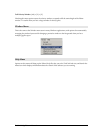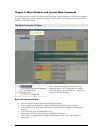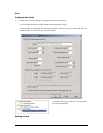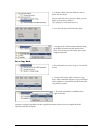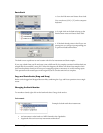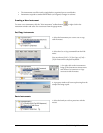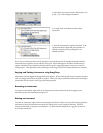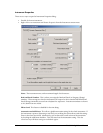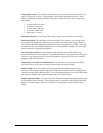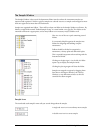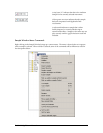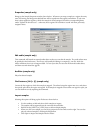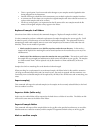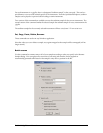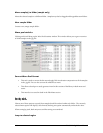
TASCAM GigaEditor 4 Manual 121
Tuning Adjust (cents). You can adjust the global tuning of the entire instrument in cents over a
range of 7 octaves up or down. Values between –50 and 50 are more likely to be used. is is
handy for tuning instruments from dierent libraries to match each other. Enter a value from –
8400 to 8400.
• A quarter tone is 50 cents.
• A half step is 100 cents.
• A whole step is 200 cents.
• An octave is 1200 cents.
• 8400 cents is 7 octaves.
Pitch Bend (semitones). Sets the pitch bend range. Legal values are from 0 to 12 semitones.
Piano Release Mode. is checkbox is for Piano samples. On a real piano, you can step on the
sustain pedal very quickly aer releasing the notes and you will still get some strings resonance.
is checkbox allows the GigaStudio to emulate that when using pedal down samples. (Note that
this mode is for use only with piano libraries that use actual pedal down samples. It’s not needed
when the ambience is supplied by GigaPulse.)
First and Last Keyswitch Key. Sets the region of the keyboard which will be used for any
Keyswitch dimensions in this instrument. Note that the keyswitch range appears in the Keyboard
window as a gray region (purple if a Keyswitch dimension is present) and can also be moved by
dragging its edges with the mouse.
Initialize these controllers on instrument load. Use this section to specify one or two MIDI
controllers to be set to the value you specify whenever this instrument is loaded.
Audition sample. Shows the sample currently designated as the audition sample for this
instrument. (e audition sample is played in the QuickSound Explorer when you highlight this
instrument and press the Audition button.) To set the audition sample for the current instrument,
right-click on a sample in the sample list and choose Set as audition sample.
Dynamic Expression Filter. e second tab of the Instrument Properties dialog controls settings
for the Dynamic Expression Filter. ese settings work in conjunction with the DEF coecients
applied to individual regions within the instrument. See page 168 for an explanation of these
settings.



